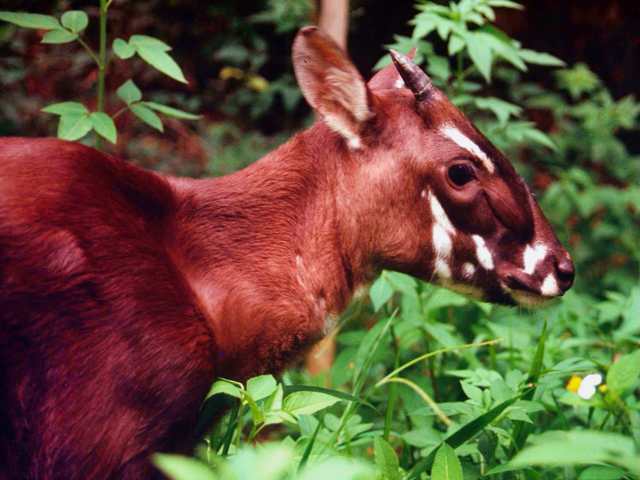Enter the realm of the Saola, Vietnam’s most endangered mammal, residing in the lush landscapes that bridge the borders between Vietnam and the Lao People’s Democratic Republic.
In the lush tropical forests of the Annamite Range, straddling the border between Vietnam and the Lao People’s Democratic Republic, resides one of the most endangered mammals known as the Saola. Often referred to as the Asian unicorn, the Saola is a remarkable discovery in the field of zoology, distinguished enough to warrant the creation of a new genus named Pseudoryx, with the Saola specifically identified as Pseudoryx nghetinhensis. Recognizing the importance of preserving this unique species, the Vietnamese government, in collaboration with local communities, has established the Saola Natural Reserve.
Adult Saolas can reach weights of up to 90 kg, with their heads measuring around 150 cm in length. Standing at a shoulder height of approximately 85 cm, these elusive mammals boast tails nearly 20 cm long. Their soft and thin dark brown skin features a distinctive black stripe along the back. Notably, Saolas exhibit unique horns that can grow up to half a meter, curving backward. White stripes adorn their cheeks, accompanied by similar white markings on their eyebrows, noses, and chin. Saolas’ legs are characterized by a darker hue with white dots on their feet.
Preferencing mountainous forests, Saolas tend to venture near villages during the rainy seasons when streams overflow, though they avoid entering fields. This critically endangered mammal, with only one female Saola captured in Laos in August 2010 (which unfortunately perished while pregnant), faces significant threats, particularly from hunting. The Saola’s rarity raises concerns about its potential extinction, particularly in Vietnam.
Saolas primarily feed on small leafy plants, especially fig leaves and stems along riverbanks. Unfortunately, hunting poses the most significant threat to the Saola, driven by the desire for its prized meat and the use of facial glands for purported medicinal purposes. Additionally, the extraction of timber for small-scale agriculture and logging exacerbates the vulnerability of remaining Saolas to hunters. Urgent conservation efforts are imperative to safeguard the Saola from the brink of extinction, ensuring the preservation of this extraordinary species for future generations.
Save Saola from extinction
The Saola, an extraordinary creature, teeters on the brink of extinction, and its remarkable tale is both fascinating and alarming. Unveiled to the world only in 1992, this 200+lb bovid has managed to elude human discovery for an astonishingly prolonged period. Astonishingly, scientists have documented the existence of fewer than half a dozen Saolas in their natural habitat.
Discovered through horns collected by hunters in the Annamite Mountain Range spanning Laos and Vietnam, the Saola derives its name from its straight, Unicorn-like horns, translating to “spindle horns” in Vietnamese. Sporting brown coats with distinctive white facial markings, the Saola’s appearance is as captivating as its elusiveness.
Despite being glimpsed by locals in the remote mountainous forests, and even captured on a few occasions, the Saola’s captive existence has been fraught with challenges. Of the 11 captured so far, the most recent in August 2010, all succumbed to unknown factors, leaving the total population shrouded in uncertainty. The Saola faces severe threats from habitat loss and poaching, earning it the critical designation of being “Critically Endangered.”
In response to this perilous situation, the World Wildlife Fund (WWF) has dedicated two decades to the protection and conservation of the Saola. Their efforts extend to enhancing the management of the Vu Quang Nature Reserve, conducting surveys to better understand the Saola’s habitat, and bringing international attention to the plight of this enigmatic species. The race against time to save the Saola underscores the importance of concerted global efforts in preserving biodiversity and safeguarding our planet’s most vulnerable inhabitants.
IUCN Status : Critically Endangered
Location : Vietnam and Laos
Size : Height up to 35in (90cm), Weight up to 220lbs (100kg)
Classification : Phylum : Chordata — Class : Mammalia — Order : Artiodactyla
Family : Bovidae — Genus : Pseudoryx — Species : P. nghetinhensis

